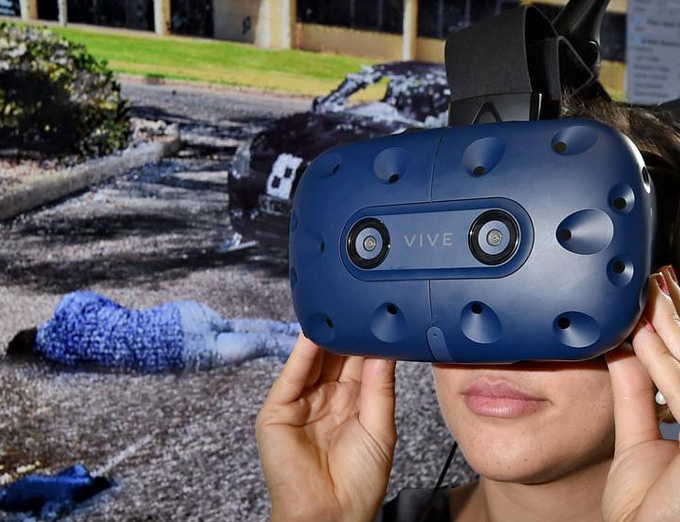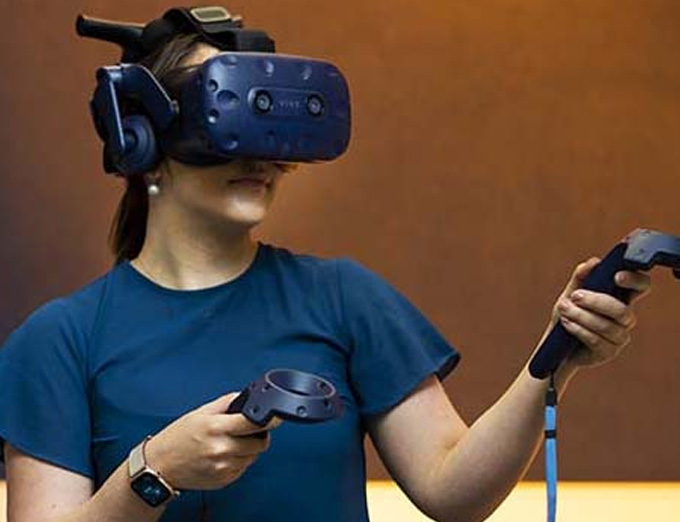
As any juror can tell you, piecing together a the facts of a crime limited to a series of documents and photographs presented in a courtroom is no easy feat, especially when a human being’s future hangs in the balance.
Delivering the correct verdict on cases from car accident to murder is contingent on good spatial awareness, but short of being at the scene of the crime, the room for error is large.
However, thanks to the development of virtual reality (VR), jurors now have a better chance of making the correct decision.
A new study published by the University of South Australia (UniSA), provides overwhelming evidence in favor of allowing the use of VR in the courtroom, effectively dropping jurors right in the middle of a car accident or murder scene.
(A new study published by the University of South Australia provides overwhelming evidence in favor of using virtual reality in the courtroom, effectively dropping jurors right in the middle of a car accident or murder scene. Courtesy of University of South Australia and YouTube. Posted on July 21, 2021.)
A team of UniSA researchers, legal professionals, police and forensic scientists simulated a hit-and-run scene, reconstructing the events with a laser scanner to compare verdicts between ‘jurors’ using 3D headsets and those relying on photographs alone from the scene.
The result indicated jurors have the benefit of better recall, spatial accuracy and more consistent verdicts in the case of the jurors (involving 30 study participants), using interactive technology.
“Virtual reality also required significantly less effort than using photographs to piece together the sequence of events,” explains Dr. Andrew Cunningham, from UniSA’s Australian Research Centre for Interactive and Virtual Environments.

Study participants viewing the scene through a 3D headset were 9.5 times more likely (86.67 per cent) to choose the same verdict – Death by Dangerous Driving – than the group who relied solely on photographs, who were split 47/53 per cent between a careless driving verdict and dangerous driving verdict.
“Participants who were immersed in the scene were more likely to correctly remember the location of the car in relation to the victim at the time of the accident, whereas it was difficult for people to visualize the scene from still images.”
“This provides unequivocal evidence that interactive technology leads to fairer and more consistent verdicts, and indeed could be the future of courtrooms,” Dr Cunningham says.

“Site visits are still the gold standard in providing juries with a realistic impression of a scene, but they also have their drawbacks,” according to UniSA immersive technologies lead researcher Dr. Carolin Reichherzer.
“They are expensive, especially in remote locations, and in some cases the site itself has changed, making accurate viewings impossible.”
Virtual reality has precedence in the court room internationally, with the most famous example in 2019 when the Bavarian State criminal office created an interactive scene of the infamous Auschwitz concentration camp to aid the prosecution’s case in a war crimes trial.
(See how in Germany, prosecutors have used virtual reality (VR) models of Auschwitz to build cases against World War II criminals. Courtesy of The Atlantic and YouTube. Posted on Apr 5, 2019.)
The study was led by UniSA PhD candidate Carolin Reichherzer who has now graduated and is working in Switzerland. UniSA researchers involved in the study included Dr. Andrew Cunningham, Professor Bruce Thomas, Professor Mark Billinghurst, Tracey Coleman and Ruochen Cao. University of Adelaide academics and forensic scientists from the Institute of Environmental Science in Auckland also took part in the study.
Learn More…
(A deeper dive. Geo-temporal narratives tell a story of entities, their movements, and as a result, their potential relationships, thereby defining the who, what, where, and when that define a story; everything except the why explains Dr. Andrew Cunningham. This project is an immersive virtual reality system we have developed to convey these narratives, specifically focusing on the law enforcement domain. The system lets users not only view who was where and when, but also view explicit and implicit relationships between entities, repeated visits to recurring locations, as well as the crucial descriptive information supporting the why. Courtesy of Andrew Cunningham and YouTube. Posted on Mar 16, 2021.)
AST strives to meet a 3 STAR trustworthiness rating, based on the following criteria:
- Provides named sources
- Reported by more than one notable outlet
- Includes supporting video, direct statements, or photos

















